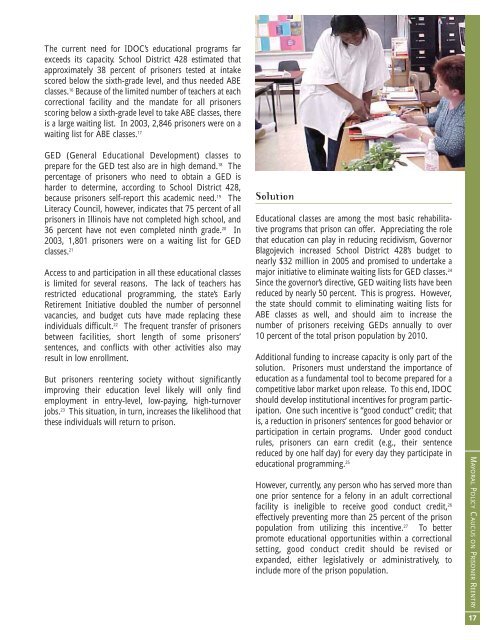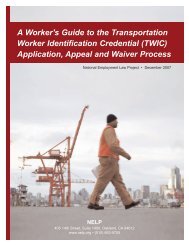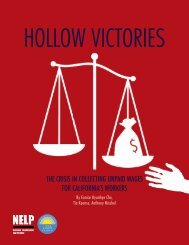Rebuilding Lives. Strengthening Communities.
Rebuilding Lives. Strengthening Communities.
Rebuilding Lives. Strengthening Communities.
You also want an ePaper? Increase the reach of your titles
YUMPU automatically turns print PDFs into web optimized ePapers that Google loves.
The current need for IDOC’s educational programs far<br />
exceeds its capacity. School District 428 estimated that<br />
approximately 38 percent of prisoners tested at intake<br />
scored below the sixth-grade level, and thus needed ABE<br />
classes. 16 Because of the limited number of teachers at each<br />
correctional facility and the mandate for all prisoners<br />
scoring below a sixth-grade level to take ABE classes, there<br />
is a large waiting list. In 2003, 2,846 prisoners were on a<br />
waiting list for ABE classes. 17<br />
GED (General Educational Development) classes to<br />
prepare for the GED test also are in high demand. 18 The<br />
percentage of prisoners who need to obtain a GED is<br />
harder to determine, according to School District 428,<br />
because prisoners self-report this academic need. 19 The<br />
Literacy Council, however, indicates that 75 percent of all<br />
prisoners in Illinois have not completed high school, and<br />
36 percent have not even completed ninth grade. 20 In<br />
2003, 1,801 prisoners were on a waiting list for GED<br />
classes. 21<br />
Access to and participation in all these educational classes<br />
is limited for several reasons. The lack of teachers has<br />
restricted educational programming, the state’s Early<br />
Retirement Initiative doubled the number of personnel<br />
vacancies, and budget cuts have made replacing these<br />
individuals difficult. 22 The frequent transfer of prisoners<br />
between facilities, short length of some prisoners’<br />
sentences, and conflicts with other activities also may<br />
result in low enrollment.<br />
But prisoners reentering society without significantly<br />
improving their education level likely will only find<br />
employment in entry-level, low-paying, high-turnover<br />
jobs. 23 This situation, in turn, increases the likelihood that<br />
these individuals will return to prison.<br />
Solution<br />
Educational classes are among the most basic rehabilitative<br />
programs that prison can offer. Appreciating the role<br />
that education can play in reducing recidivism, Governor<br />
Blagojevich increased School District 428’s budget to<br />
nearly $32 million in 2005 and promised to undertake a<br />
major initiative to eliminate waiting lists for GED classes. 24<br />
Since the governor’s directive, GED waiting lists have been<br />
reduced by nearly 50 percent. This is progress. However,<br />
the state should commit to eliminating waiting lists for<br />
ABE classes as well, and should aim to increase the<br />
number of prisoners receiving GEDs annually to over<br />
10 percent of the total prison population by 2010.<br />
Additional funding to increase capacity is only part of the<br />
solution. Prisoners must understand the importance of<br />
education as a fundamental tool to become prepared for a<br />
competitive labor market upon release. To this end, IDOC<br />
should develop institutional incentives for program participation.<br />
One such incentive is “good conduct” credit; that<br />
is, a reduction in prisoners’ sentences for good behavior or<br />
participation in certain programs. Under good conduct<br />
rules, prisoners can earn credit (e.g., their sentence<br />
reduced by one half day) for every day they participate in<br />
educational programming. 25<br />
However, currently, any person who has served more than<br />
one prior sentence for a felony in an adult correctional<br />
facility is ineligible to receive good conduct credit, 26<br />
effectively preventing more than 25 percent of the prison<br />
population from utilizing this incentive. 27 To better<br />
promote educational opportunities within a correctional<br />
setting, good conduct credit should be revised or<br />
expanded, either legislatively or administratively, to<br />
include more of the prison population.<br />
MAYORAL POLICY CAUCUS ON PRISONER REENTRY<br />
17
















